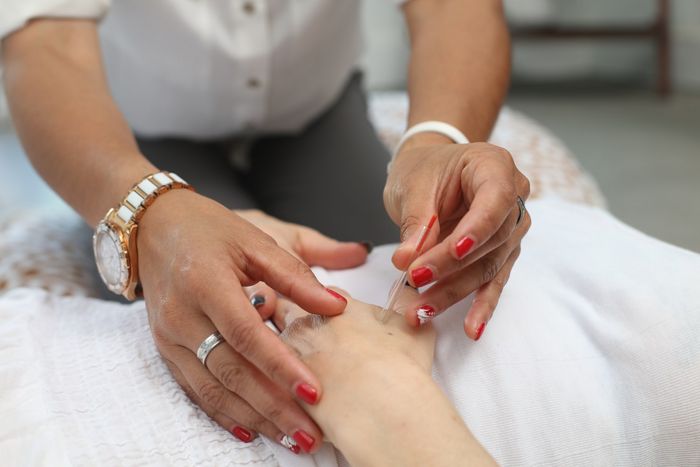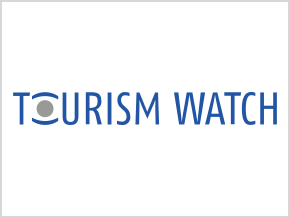The COVID-19 pandemic has shown how far the world has been from „ensuring healthy lives and promoting well-being for all at all ages“. As one of the 17 Sustainable Development Goals (SDGs), health is of high priority to the international community. Travel has above all proven to be a driver of the pandemic. But health tourism may also contribute to recovery and resilience.
The problem of ‘pre-existing conditions’ has thrown a light on the vulnerability of many people. In rich countries such as Germany, the main problems are lifestyle diseases like diabetes and obesity while in developing countries many health conditions are related to malnutrition. In respect to both prevention and cure, the COVID-19 pandemic has revealed major shortcomings. Apart from effective measures to combat the spread of the pandemic, the resilience of societies against COVID-19 also depends on the robustness of health systems, the structure of the population and the disease burden. While after more than one year the struggle is still on to avoid future waves of the pandemic, attention needs to also focus on dealing with a multitude of health problems following the crisis.
Global travel – whether for tourism purposes or other – has spread SARS-Cov-2 around the world. Its variants may continue to be spread by asymptomatically or pre-symptomatically infected travellers, especially when immigration and quarantine regulations and obligations for testing are lifted while vaccination campaigns in many countries have not made sufficient progress yet. While there is still a need to exercise all necessary caution, the restart of tourism also promises recovery from the pandemic. This applies to people in the destinations who after a long time may recover their jobs and income and to the guests in need of a vacation.
Health impacts of the pandemic
According to an international study, people’s physical and mental well-being suffered significantly under COVID-19 and the pandemic related restrictions. The extent to which COVID-19 may have long-term ‘Long Covid’ effects is not yet predictable. Many other conditions were given much less attention during the pandemic, treatments were postponed. Many people’s nutrition has deteriorated. However, the pandemic also strengthened the trend towards healthier food habits and lifestyles.
Holidays and travel play an important role in getting a break from daily chores, relaxing, experiencing something new and gathering new strength. The right to annual leave has for good reasons – for the protection of the health of workers – been enshrined in law. Post-COVID, health tourism services are likely to gain importance.
Medical and health tourism
Even before COVID-19, there has been a boom in a broad range of health-related travel – from medical tourism to health-enhancing wellness programmes. Differences with regard to the costs of treatment, waiting time for surgeries, or the quality of health care have given a boost to medical tourism, often combining treatment and holidays. A few years ago, the Indian government introduced special medical visa in order to attract more foreign patients. Thailand, too, has strengthened the country’s position as a South East Asian hub of medical services and wellness.
Growth market wellness
Wellness products in tourism place emphasis on relaxation and regeneration that is beneficial to health. According to data by the Global Wellness Institute (GWI), wellness tourism registered a 6.5 percent growth between 2015 and 2017, more than twice as much as tourism in general. 830 million wellness and medical trips were made in 2017, of which 209 million were made to Asia, according to the GWI’s “Global Wellness Tourism Economy” report. The Asia-Pacific region, led by China and India, recorded particularly high growth rates. Latin America and the Caribbean, the Middle East and Northern Africa and Sub-Saharan African countries recorded above-average growth.
Unique selling propositions in health tourism
Destinations boast their own culture and gastronomy and often also natural factors, traditions, and healing methods beneficial to health. In health tourism countries with culturally specific healing methods have been able to develop unique selling propositions. Ayurveda – the “knowledge of life“ – in India and Sri Lanka or traditional Chinese, Thai or Tibetan medicine in different Asian countries combine the treatment of health issues with preventive health care.
In Latin America, Costa Rica has developed a brand image with a “Wellness Pura Vida” campaign, relying on wellness close to nature. In Africa, South Africa, for example, has diversified tourism products and services with ‘mindfulness safaris‘ and yoga in the wilderness towards wellness. Morocco relies on traditional baths (hammams), Egypt on sand baths and hot springs.
Recovery and resilience for guests and local people
Health tourism provides destinations with opportunities for a significantly higher value added than many other areas of tourism. According to the GWI, wellness trips account for 6.6 percent of all tourism trips, but capture 16.8 percent of total tourism expenditures. Products and services that are independent of specific seasons help reduce seasonality in tourism. In this segment, there is also less pressure for destinations to engage in a ‘race to the bottom’ strategy competing on price.
A good health, recreation and wellness infrastructure improves the resilience of destinations and societies in and after the crisis not only with regard to public health, but also in economic terms. If organised well, it serves health tourism and also benefits the well-being of the local population.



